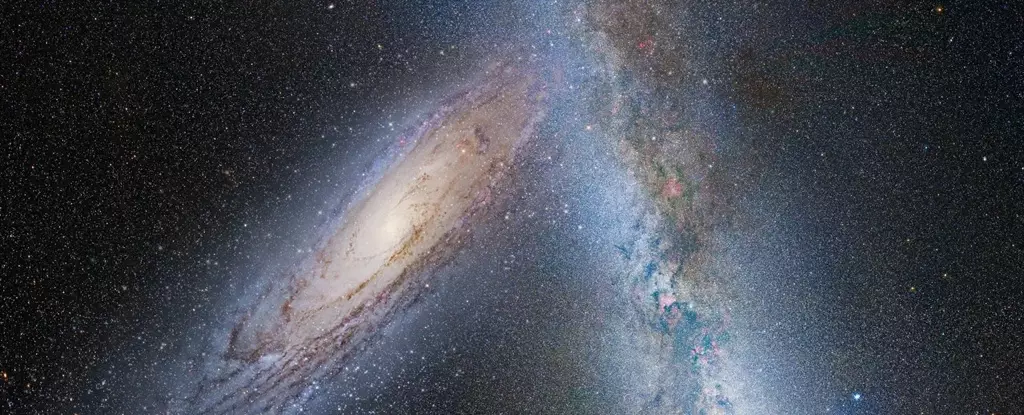The idea of the Milky Way and Andromeda galaxies colliding has been a topic of interest for astronomers for quite some time. However, a recent study challenges the notion that this collision is a foregone conclusion. While previous research pointed to a high probability of the two galaxies merging, new findings suggest that the odds may not be as clear-cut as once thought.
New Research Findings
Researchers from the University of Helsinki and Durham University conducted a comprehensive analysis of the motion and mass data of not only the Milky Way and Andromeda but also other key players in our galactic neighborhood, such as the Large Magellanic Cloud and the Triangulum Galaxy. By incorporating these additional variables into their simulations, the researchers found that the likelihood of a collision occurring within the next 10 billion years was closer to 50/50.
Contrary to previous studies, which suggested a collision was almost inevitable, the new research introduces a level of uncertainty regarding the future interaction between the Milky Way and Andromeda. By considering a more holistic view of our Local Group of galaxies, the researchers were able to paint a more nuanced picture of the potential outcomes, ranging from a merger to the two galaxies continuing to evolve separately.
The Impact of Galactic Collisions
While the idea of galaxies colliding may evoke images of cosmic chaos, the reality is less dramatic. Given the immense timescales involved, any potential collision between the Milky Way and Andromeda would occur billions of years in the future, far beyond the lifespan of our Sun. Even in the event of a merger, the vast empty spaces between stars in galaxies means that actual stellar collisions are unlikely.
If the Milky Way and Andromeda were to merge, the resulting galaxy, nicknamed “Milkomeda,” would take on a new elliptical shape, losing the distinctive spiral structures of its predecessors. The gravitational interactions between stars would lead to a reconfiguration of the galactic landscape, with new stars forming and existing ones being pushed into different orbits.
Looking Ahead
Despite the uncertainty surrounding the fate of the Milky Way and Andromeda, one thing is clear: further research is needed to refine our understanding of galactic dynamics. The upcoming release of data from the Gaia mission holds the promise of shedding more light on the trajectories of these galaxies and potentially clarifying the likelihood of a future collision.
The once-inevitable collision between the Milky Way and Andromeda now appears to be a more complex and uncertain scenario. While the potential merger of these two galaxies remains a possibility, the latest research suggests that there is an equal chance of them continuing on separate paths. As our knowledge of the cosmos continues to expand, so too will our understanding of the intricate dance of galaxies in the universe.


Leave a Reply